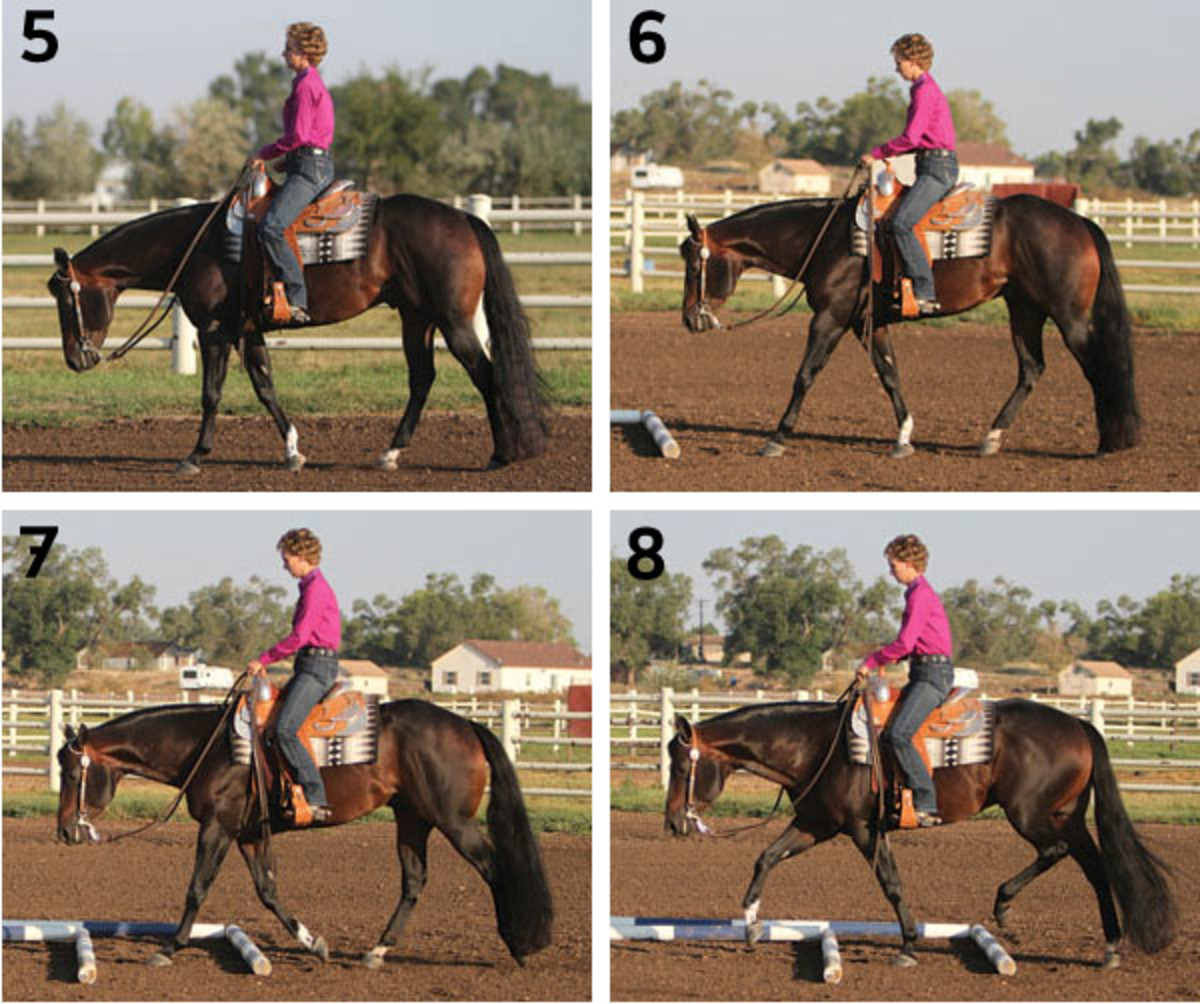Lesson Objective
If you compete: Learn to shine on the rail or in a pattern with a perfectly executed extended trot.
If you don’t: Achieve greater control of you horse for any activity by mastering a gait you might otherwise overlook.
[READ: STOP BUGGING YOUR HORSE]
The extended trot in Western events is often misunderstood or even overlooked by beginner and intermediate riders. While the Western extended trot doesn’t show the extreme length of stride that top hunter under saddle horses exhibit, it does involve the horse lengthening his stride, pointing his front toe, and the opposite hind leg mirroring that position.
Here, I’ll evaluate a horse and rider as they transition to an extended trot and back to a jog. I’ll discuss both the horse’s and the rider’s nuances for presenting the gait in the best possible manner.
1. Looking at the horse’s legs, you can tell that he’s jogging, because there’s not any extreme extension. This is a nice, collected jog, and the rider has a solid base, meaning that her ear, shoulder, hip, and heel are in alignment. As a judge, I look for that secure base starting at the rider’s foot, which means that stirrup length is extremely important. If you look at any of the more advanced disciplines with high-impact maneuvers—reining and working cow horse, for example—the riders have shorter stirrups. Too-long stirrups don’t provide the security and strength necessary for proper position, no matter the activity.

[READ: 4 TIPS TO AVOID RAIL CLASS TRAFFIC JAMS]
2. Here’s the extended trot, which shows a greater length of stride than in Photo 1. He’s extending his left front leg and pointing that toe. You’ll notice that his toe almost goes as far forward as his nose, which shows full extension. His right hind leg mirrors that position. The rider has maintained her solid leg position, thanks to properly adjusted stirrups. Her body can better absorb the bounce that can come with a Western extended trot, because her stirrups aren’t too long.
3. Here’s an example of what happens when the stirrups are too long: The rider’s leg has drifted back, and she doesn’t look as in control. Her leg is braced between the horse and the stirrup, because she’s holding on with her calves. This leg position caused her shoulders to roll forward and her chin to stick out, which takes her body out of alignment, alters her balance, and makes it difficult to ride an extended trot, or any maneuver, for that matter.
4. This is the beginning of the collection process to take the horse from the extended trot back down to the jog. You can see the difference in the horse’s head and leg position. It’s a great example of the horse’s toe reaching only as far as his nose, because the rider brought the horse’s nose in to slow down. As she cued for the downward transition, you can see that the rider got a little ahead of the horse’s motion. That’s OK for this part of the transition, but she has to get back into position right away.
5. Here’s the finished product after the downward transition. The horse’s stride is back to a jog length, the horse looks calm and relaxed, and the rider has regained her proper position.

6. One place we see extension at the trot—or a “trail trot,” as we call it—is going over poles in a trail class. The rider has good leg position here, and her slightly forward torso encourages the horse to approach the poles with rhythm and life in his trot. These poles are 3 feet apart, which means they require one stride to cover.
7. The horse’s left front foot is between the poles, and you can see that the right front will have to take an extended stride to get over both poles.
8. If the horse’s stride wasn’t long enough and he wasn’t traveling with enough speed, all four of his legs would’ve landed between the poles at some point in the stride—or hit the poles themselves. A properly extended stride is required to navigate the obstacle. That’s why using poles is a great way to teach the extended trot at home—your horse doesn’t want to hit the poles, so he’ll learn to adjust his stride instead.
[READ: 4 WAYS TO BE THE BEST RIDER YOU CAN BE]
Leslie Lange, Greeley, Colorado, is a lifelong horsewoman. She’s well respected for her skills training all-around horses and is an AQHA judge, as well as a national director for AQHA and NSBA. She’s trained and coached world champions and was the 2003 AQHA Professional Horsewoman of the Year.






